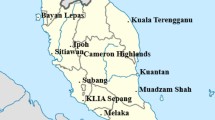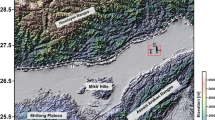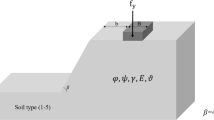Abstract
Reduction in uncertainty at the boundaries of ore deposits plays a critical role in mining projects. Such reductions can be made by choosing an appropriate objective function and using a suitable method for its optimization. In the literature, only a combined variance-based objective function can be found for modeling the problem of optimally locating additional drill holes to reduce uncertainty at the boundaries of mineralization. In this study, new objective functions based on interpolation variance (IV) and information entropy (IE) were developed and optimized through particle swarm optimization. The results of the proposed optimization methodology were compared with those of the combined variance-based objective function. Most of the proposed drill holes of the IV-based, IE-based and combined variance-based optimization methods are similar in many parts of the study area. However, IV-based and IE-based methods gave better results than the combined variance-based method. The proposed drill holes based on the IE-based objective function are better scattered over the area. This issue can be regarded as an advantage for the IE criterion both economically and technically.










Similar content being viewed by others
References
Abidin, N., Ab. Rashid, M. F. F., & Mohamed, N. (2018). Optimization of Multi-holes Drilling Path Using Particle Swarm Optimization. In (pp. 101–107).
Arik, A. (1999a). An alternative approach to resource classification. In: International Symposium on Computer Applications in the Mineral Industries (APCOM’99), (vol. 28, pp. 45–53)
Arik, A. (1999). Uncertainty, confidence intervals and resource categorization: a combined variance approach. ISGSM, Perth, Australia: Proc.
Boni, M., Gilg, H. A., Balassone, G., Schneider, J., Allen, C. R., & Moore, F. (2007). Hypogene Zn carbonate ores in the Angouran deposit. NW Iran. Mineralium Deposita, 42(8), 799–820.
Borg, G., & Daliran, F. (2004). Hypogene and supergene formation of sulphides and non-sulphides at the Angouran high-grade zinc deposit, NW-Iran. Abstract volume of geoscience Africa, 69–70.
Clerc, M., & Kennedy, J. (2002). The particle swarm: explosion, stability, and convergence in a multi-dimensional complex space. IEEE Transactions on Evolutionary Computation, 6, 58–73.
Daliran, F., & Borg, G. (2005). Characterisation of the nonsulphide zinc ore at Angouran, Northwestern Iran, and its genetic aspects. In (pp. 913–916).
de Souza, L., Costa, J., & Koppe, J. (2010). Comparative analysis of the resource classification techniques: case study of the Conceição Mine, Brazil. Applied Earth Science: Transactions of the Institutions of Mining and Metallurgy: Section B, 119(3), 166–175.
Eberhart, R., & Kennedy, J. A new optimizer using particle swarm theory. In: Micro Machine and Human Science, 1995. MHS '95., Proceedings of the Sixth International Symposium on, 4–6 Oct 1995 1995 (pp. 39–43). doi:https://doi.org/10.1109/MHS.1995.494215.
Fatehi, M., Asadi Haroni, H., & Hossein Morshedy, A. (2017). Designing infill directional drilling in mineral exploration by using particle swarm optimization algorithm. Arabian Journal of Geosciences, 10(22), 487.
Fukuyama, Y. (2007). Fundamentals of Particle Swarm Optimization Techniques. In: Modern Heuristic Optimization Techniques (pp. 71–87): Wiley, NewYork
Gershon, M., Allen, L. E., & Manley, G. (1988). Application of a new approach for drillholes location optimization. International Journal of Surface Mining, Reclamation and Environment, 2(1), 27–31.
Isaaks, E. H., & Srivastava, R. M. (2001). An introduction to applied geostatistics. 1989. New York, USA: Oxford University Press.
Jones, D. R. (2001). A taxonomy of global optimization methods based on response surfaces. Journal of Global Optimization, 23, 345–383.
Johnson, N. M., & Dreiss, S. J. (1989). Hydrostratigraphic interpretation using indicator geostatistics. Water Resources Research, 25(12), 2501–2510.
Journel, A. G. (1983). Nonparametric estimation of spatial distributions. Journal of the International Association for Mathematical Geology, 15(3), 445–468.
Journel, A. G., & Huijbregts, C. J. (1978). Mining geostatistics. London, New York: Academic Press.
Kim, Y. C., Martino, F., & Chopra, I. R. (1981). Geostatistical Investigation of Past drilling Activities in a Coal Deposit. Paper presented at the AIME Annual General Meeting,
Kumral, M., & Ozer, U. (2013). Planning additional drilling campaign using two-space genetic algorithm: A game theoretical approach. Computers & Geosciences, 52, 117–125.
Marinoni, O. (2003). Improving geological models using a combined ordinary–indicator kriging approach. Engineering Geology, 69(1), 37–45.
McLennan, J. A. (2008). The decision of stationarity. Ph.D Thesis, University of Alberta,
Pan, G., Gaard, D., Moss, K., & Heiner, T. (1993). A comparison between cokriging and ordinary kriging: Case study with a polymetallic deposit. Mathematical Geology, 25(3), 377–398.
Pawlowsky, V., Olea, R. A., & Davis, J. C. (1993). Boundary assessment under uncertainty: a case study. Mathematical Geology, 25(2), 125–144.
Perez, J. R., & Basterrechea, J. (2007). Comparison of Different Heuristic Optimization Methods for Near-Field Antenna Measurements. Antennas and Propagation, IEEE Transactions on, 55(3), 549–555. https://doi.org/10.1109/TAP.2007.891508.
Pilger, G., Costa, J., & Koppe, J. (2001). Additional samples: where they should be located. Natural Resources Research, 10(3), 197–207.
Safa, M., & Soltani-Mohammadi, S. (2018). Distance function modeling in optimally locating additional boreholes. Spatial Statistics, 23, 17–35.
Scheck, D., & Chou, D.-R. (1983). Optimum locations for exploratory drill holes. International Journal of Mining Engineering, 1(4), 343–355.
Self, R., Atashnezhad, A., & Hareland, G. (2016). Reducing Drilling Cost by finding Optimal Operational Parameters using Particle Swarm Algorithm. Paper presented at the SPE Deepwater Drilling and Completions Conference, Galveston, Texas, USA, 2016/9/14/
Sohrabian, B., Hosseinzadeh Gharehgheshlagh, H., Soltani-Mohammadi, S., & Abdollahi Sharif, J. (2020). Evaluation of Tailings from a Porphyry Copper Mine based on Joint Simulation of Contaminants. Natural Resources Research, 29(2), 983–1005.
Soltani-Mohammadi, S., Safa, M., & Mokhtari, H. (2016). Comparison of particle swarm optimization and simulated annealing for locating additional boreholes considering combined variance minimization. Computers & Geosciences, 95, 146–155.
Soltani, S., & Hezarkhani, A. (2009). Additional exploratory boreholes optimization based on three-dimensional model of ore deposit. Archives of Mining Sciences, 54(3), 495–506.
Soltani, S., & Hezarkhani, A. (2013). Proposed algorithm for optimization of directional additional exploratory drill holes and computer coding. Arabian Journal of Geosciences, 6(2), 455–462.
Soltani, S., Hezarkhani, A., Tercan, A. E., & Karimi, B. (2011). Use of genetic algorithm in optimally locating additional drill holes. Journal of Mining Science, 47(1), 62–72.
Szidarovszky, F. (1983). Multiobjective observation network design for regionalized variables. International Journal of Mining Engineering, 1(4), 331–342.
Tercan, A. E. (1998). Assessment of Boundary Uncertainty in a Coal Deposit Using Probability Kriging. Trans. Instn. Min. Metall., 107, A51–A54.
Wackernagel, H. (2013). Multivariate geostatistics: an introduction with applications. Berlin: Springer.
Webster, R., & Oliver, M. A. (2001). Geostatistics for environmental scientists Statistics in practice. Chichester, England; New York: Wiley.
Wellmann, J. F., Horowitz, F. G., Schill, E., & Regenauer-Lieb, K. (2010). Towards incorporating uncertainty of structural data in 3D geological inversion. Tectonophysics, 490(3), 141–151.
Wellmann, J. F., & Regenauer-Lieb, K. (2012). Uncertainties have a meaning: Information entropy as a quality measure for 3-D geological models. Tectonophysics, 526–529, 207–216.
Yamamoto, J. (2000). An Alternative Measure of the Reliability of Ordinary Kriging Estimates. Mathematical Geology, 32(4), 489–509.
Yamamoto, J. K. (1999). Quantification of uncertainty in ore-reserve estimation: Applications to Chapada copper deposit, State of Goiás, Brazil. Natural Resources Research, 8(2), 153–163.
Yamamoto, J. K., Kikuda, A. T., Koike, K., Campanha, G. A., d. C., Leite, C. B. B., Endlen, A., , et al. (2015). Determination of volumetric uncertainty for geological bodies detected by boreholes. Measurement, 66, 45–53.
Zhu, G.-Y., & Zhang, W.-B. (2008). Drilling path optimization by the particle swarm optimization algorithm with global convergence characteristics. International Journal of Production Research, 46(8), 2299–2311.
Acknowledgement
The studies reported in this manuscript were supported by a grant from the University of Kashan (Grant No. 986017).
Author information
Authors and Affiliations
Corresponding author
Rights and permissions
About this article
Cite this article
Soltani-Mohammadi, S., Safa, M. & Sohrabian, B. Reducing Uncertainty in Mineralization Boundary by Optimally Locating Additional Drill Holes Through Particle Swarm Optimization. Nat Resour Res 30, 2067–2083 (2021). https://doi.org/10.1007/s11053-021-09820-w
Received:
Accepted:
Published:
Issue Date:
DOI: https://doi.org/10.1007/s11053-021-09820-w




